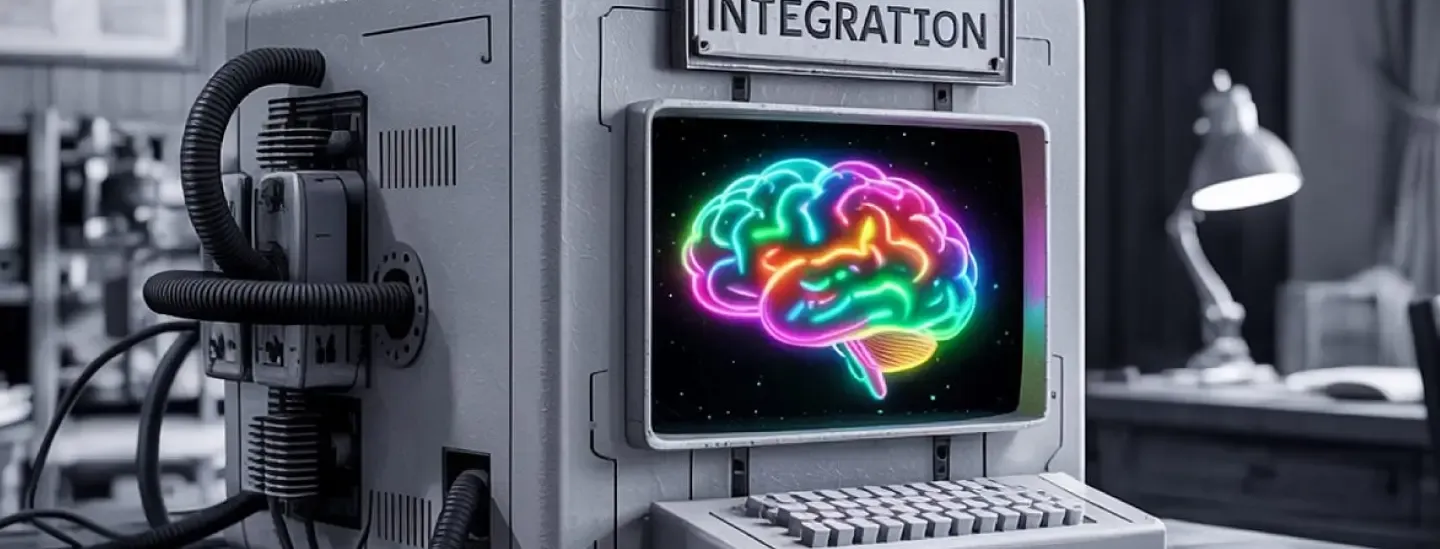
Integrating Generative AI into PDF Workflows
This blog explores how integrating Generative AI into PDF workflows transforms document handling by automating summarization, form processing, and redaction. It covers the key technologies involved and highlights practical use cases across major industries.
Published On: 06 November, 2024
2 min read
Table of Contents
PDFs are key in creating invoices, reports, and contracts in organizations. Usually, professionals in the legal, finance, and healthcare sectors often need to summarize lengthy PDF documents to extract important information, which is time-consuming.
However, integrating Generative AI into a PDF SDK can improve efficiency, accuracy, and productivity in your business. It can help you handle repetitive tasks such as document processing, content creation, and data extraction.
But how do you integrate Generative AI into your PDF workflows?
In this write-up, we've discussed what Generative AI is and how it can enhance PDF workflows in your organization so you can focus your time on other areas of your business. Read on!
Understanding Generative AI-PDF Workflow Integration
Generative AI is shaping software development. It is designed to create new content, including text, images, and code. Now, PDFs traditionally serve as the representations of printed documents for layout preservation but are not designed for dynamic interactions. This is where Generative AI comes into play.
It helps businesses create intelligent, self-service documents, reducing manual action and improving accuracy. Essentially, Generative AI can help you shift from keyword-based search to context-aware question answering. It makes interacting with PDF documents feel much like with an AI virtual assistant.
Generative AI uses predictive modeling to generate new outputs instead of just analyzing data. Core technologies behind Generative AI-PDF integration are:
- Optical Character Recognition (OCR): SDK tools use OCR to scan images or recognize texts and convert them into searchable and selectable layers over the image.
- Natural Language Processing (NLP): NLP helps computers understand, interpret, and generate human language. It enables PDF SDK tools to understand and work with human language inside documents, or using a PDF viewer online.
- Machine Learning (ML): ML helps systems learn from data, allowing them to make predictions or decisions without being explicitly programmed.
The primary reason you integrate Generative AI is to work alongside a PDF SDK tool to summarize, translate, or fill in forms.
Use Cases of Generative AI in PDF Workflows
Once you deploy the solution on your own infrastructure, you retain full control over the document workflow. This includes how they are created, stored, and distributed.
With that in mind, below are the use cases of Generative AI in PDF workflows:
-
Automated Content Creation
AI models like GPT-4 can help you draft PDF documents such as reports, contracts, or invoices dynamically. They use natural language prompts to do so. For instance, if you work in a law firm, you can auto-generate contracts dynamically with predefined clauses.
-
Enhanced PDF Summarization and Search
Apart from Generative AI helping you with summarizing the key sections of a PDF document, it can answer questions about that particular document. It relies on semantic search to understand content, intent, and synonyms within a document and deliver smarter results. This is different from traditional keyword search which primarily looks for exact word matches.
-
Automated Form Processing
As discussed earlier, PDF SDKs use OCR and NLP technologies to extract important information from scanned PDF forms. If you have ever used Open AI's ChatGPT, you must have noticed how this Generative AI model can tailor content according to user preference and current tasks.
This is to suggest that if you are reviewing a complex document, such as an investment report, an AI-powered pdf data extraction SDK can help you identify trending insights, generate comparison tables, or forecast implications. So, instead of spending a lot of time scanning through documents manually, you could instead use that time to grow your business.
-
Intelligent Redaction and Compliance
An AI-enhanced SDK tool can automatically detect and redact sensitive information from PDFs. The goal is to maintain the trust and legal integrity of original documents.
It also ensures your documents meet regulatory and industry standards such as GDPR and HIPAA. These standards ensure user data is protected.
Now, this automation means that an AI-powered SDK solution can help you scale secure document handling in your organization. This is because it can handle growing volumes of documents with minimal manual intervention.
Workflow Steps
The step-by-step process below is an example of how you can summarize a document using Generative AI.
- Extract text from PDF using extraction SDK in Python.
- Send the extracted text to GPT-API and request a summary of the document. This could be a legal contract or a complex investment report.
- Finally, insert the summary back into your PDF.
Once the process is complete, you'll have a document containing both the original contract and AI-generated summary.
Final Word
AI-powered SDK tools are suitable for use in industries like healthcare, legal, and education, where extracting essential information is required. Now is the perfect time to adopt cutting-edge solutions like AI-PDF integration. Chances are, you will, at some point, need a solution that can help you extract structured data effortlessly, accelerate business processes, and improve decision-making.
Don’t Have Time To Read Now? Download It For Later.
Table of Contents
PDFs are key in creating invoices, reports, and contracts in organizations. Usually, professionals in the legal, finance, and healthcare sectors often need to summarize lengthy PDF documents to extract important information, which is time-consuming.
However, integrating Generative AI into a PDF SDK can improve efficiency, accuracy, and productivity in your business. It can help you handle repetitive tasks such as document processing, content creation, and data extraction.
But how do you integrate Generative AI into your PDF workflows?
In this write-up, we've discussed what Generative AI is and how it can enhance PDF workflows in your organization so you can focus your time on other areas of your business. Read on!
Understanding Generative AI-PDF Workflow Integration
Generative AI is shaping software development. It is designed to create new content, including text, images, and code. Now, PDFs traditionally serve as the representations of printed documents for layout preservation but are not designed for dynamic interactions. This is where Generative AI comes into play.
It helps businesses create intelligent, self-service documents, reducing manual action and improving accuracy. Essentially, Generative AI can help you shift from keyword-based search to context-aware question answering. It makes interacting with PDF documents feel much like with an AI virtual assistant.
Generative AI uses predictive modeling to generate new outputs instead of just analyzing data. Core technologies behind Generative AI-PDF integration are:
- Optical Character Recognition (OCR): SDK tools use OCR to scan images or recognize texts and convert them into searchable and selectable layers over the image.
- Natural Language Processing (NLP): NLP helps computers understand, interpret, and generate human language. It enables PDF SDK tools to understand and work with human language inside documents, or using a PDF viewer online.
- Machine Learning (ML): ML helps systems learn from data, allowing them to make predictions or decisions without being explicitly programmed.
The primary reason you integrate Generative AI is to work alongside a PDF SDK tool to summarize, translate, or fill in forms.
Use Cases of Generative AI in PDF Workflows
Once you deploy the solution on your own infrastructure, you retain full control over the document workflow. This includes how they are created, stored, and distributed.
With that in mind, below are the use cases of Generative AI in PDF workflows:
-
Automated Content Creation
AI models like GPT-4 can help you draft PDF documents such as reports, contracts, or invoices dynamically. They use natural language prompts to do so. For instance, if you work in a law firm, you can auto-generate contracts dynamically with predefined clauses.
-
Enhanced PDF Summarization and Search
Apart from Generative AI helping you with summarizing the key sections of a PDF document, it can answer questions about that particular document. It relies on semantic search to understand content, intent, and synonyms within a document and deliver smarter results. This is different from traditional keyword search which primarily looks for exact word matches.
-
Automated Form Processing
As discussed earlier, PDF SDKs use OCR and NLP technologies to extract important information from scanned PDF forms. If you have ever used Open AI's ChatGPT, you must have noticed how this Generative AI model can tailor content according to user preference and current tasks.
This is to suggest that if you are reviewing a complex document, such as an investment report, an AI-powered pdf data extraction SDK can help you identify trending insights, generate comparison tables, or forecast implications. So, instead of spending a lot of time scanning through documents manually, you could instead use that time to grow your business.
-
Intelligent Redaction and Compliance
An AI-enhanced SDK tool can automatically detect and redact sensitive information from PDFs. The goal is to maintain the trust and legal integrity of original documents.
It also ensures your documents meet regulatory and industry standards such as GDPR and HIPAA. These standards ensure user data is protected.
Now, this automation means that an AI-powered SDK solution can help you scale secure document handling in your organization. This is because it can handle growing volumes of documents with minimal manual intervention.
Workflow Steps
The step-by-step process below is an example of how you can summarize a document using Generative AI.
- Extract text from PDF using extraction SDK in Python.
- Send the extracted text to GPT-API and request a summary of the document. This could be a legal contract or a complex investment report.
- Finally, insert the summary back into your PDF.
Once the process is complete, you'll have a document containing both the original contract and AI-generated summary.
Final Word
AI-powered SDK tools are suitable for use in industries like healthcare, legal, and education, where extracting essential information is required. Now is the perfect time to adopt cutting-edge solutions like AI-PDF integration. Chances are, you will, at some point, need a solution that can help you extract structured data effortlessly, accelerate business processes, and improve decision-making.
Share to:

Written By:
Harram ShahidHarram is like a walking encyclopedia who loves to write about various genres but at the t... Know more
Get Help From Experts At InvoZone In This Domain